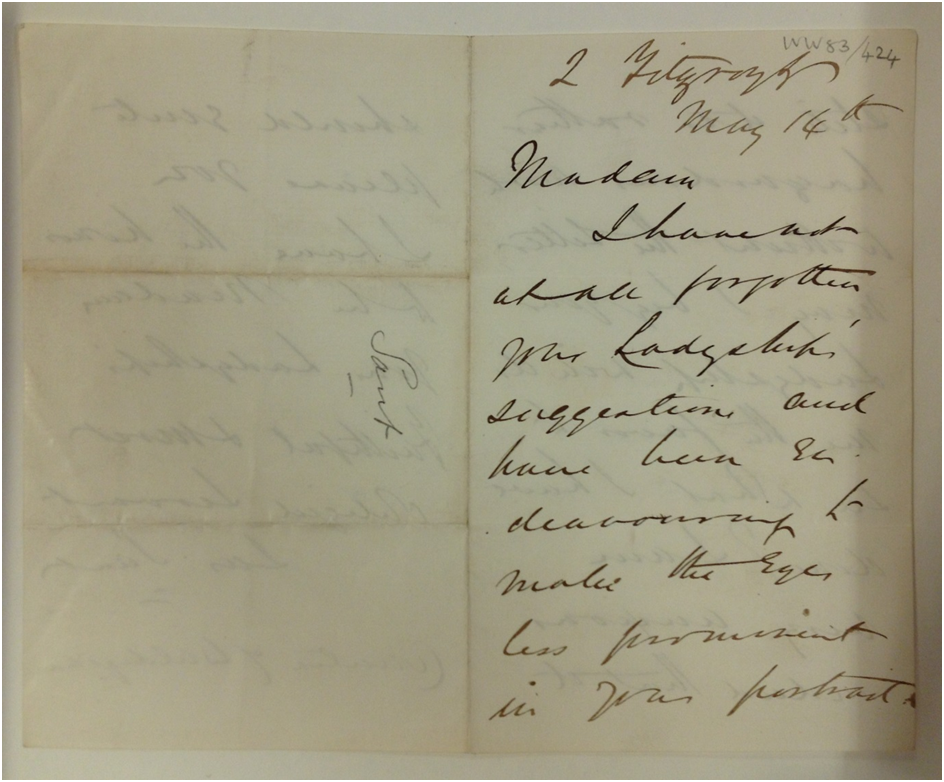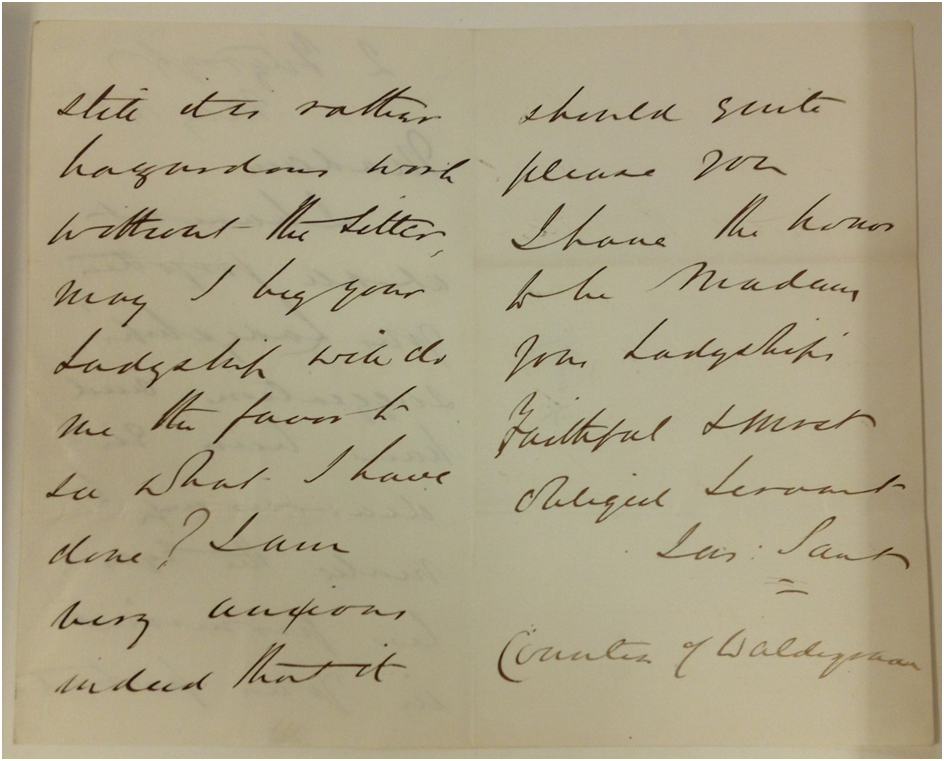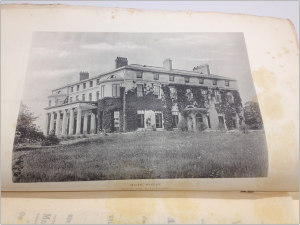Revealing Stories for the Government Art Collection by Philippa Martin

'The History of Maidstone' by J M. Russell, 1881, opposite page 335. The British Library
This bursary has been used to collect information that will enhance an existing project to improve provenance records for works in the Government Art Collection (GAC). George Mogg (who helped research the provenance of GAC works at Christie’s archives) joined me on the following archive visits.
We first visited Kent History and Library Centre in Maidstone to research two full-length portraits of Frederick V, King of Bohemia and Elizabeth, Queen of Bohemia by Dutch painter Gerrit van Honthorst (1590–1656). We knew these had once been in the collection of the Earl of Romney at Mote House, a Regency mansion, near Maidstone. They were ‘bought in’ at the Earl’s 1888 Christie’s sale, before the first Viscount Bearsted bought the Mote in 1895, along with its contents. The only similar full-length pair of Honthorst portraits of the same subjects belonged to army officer William, Earl of Craven (c.1608–1697), who was a devoted supporter of Elizabeth and her family. Craven also lived with Elizabeth at the end of her life and is even rumoured to have married her!
At 208.5 x 145.5 cm, the GAC portraits are not easily moved – as I’m sure our technicians would agree. So perhaps the works are connected, not with the Earls of Romney (I haven’t found a link), but with the Mote estate? The estate dates back to the 13th century but I was most interested in researching the period when Sir John Tufton, 2nd Baronet (c.1623–1685) lived in the 17th-century Old Mote House (demolished 1799; see image above). Tufton’s wife Margaret was the great niece of Sir Henry Wotton, a diplomat and writer who supported Frederick V and was a friend and admirer of Elizabeth. If anyone besides Craven might have been given the GAC Honthorst portraits by Elizabeth, Sir Henry Wotton would certainly fit the bill. George and I trawled through 17th-century documents relating to the house. Most were pretty dry legal documents, recording successive transfers of land and property but we had better luck with more recent archival material and found a record of the portraits in the Old Mote House and records of two different locations for the portraits within the Regency building that replaced it (above right). However, I’m still intrigued by a possible link with the Wottons. Sir Henry Wotton left another portrait of Elizabeth by Honthorst to the Prince of Wales (later Charles II) in his will. I now plan to view a copy of Elizabeth’s will in the British Library.
The second archive trip was to view the letters relating to the Waldegrave family at Somerset Record Office in Taunton. I hoped to flesh out the story of two portraits by James Sant (1820-1916), showing Lord Lyndhurst and the 4th Earl of Clarendon. These were once accompanied by pendant portraits of the wives of the sitters and were amongst 22 works by Sant, forming the ‘Gallery of Friends’ that the Countess of Waldegrave commissioned for Strawberry Hill in Twickenham. Although well-known in his life-time, little has been written about Sant in recent years and there is also little known about the Strawberry Hill project.
Just reaching Taunton was not easy. We cancelled one set of train tickets because of flooding and instead drove to the archive. The most exciting find came just as the archive was closing, when we came across letters offering the first real insights into the Countesses’ ‘Gallery of Friends’ project and the relationships between the client, sitters and artist. In one, Lord Lyndhurst writes to the Countess, gushing: ‘you always find me obedient to your commands’, before saying: ‘I venture to answer in the affirmative for L[ad]y L[yndhurst] and for myself if you will make all proper allowances…’. This letter is not dated but it is tempting to think of it as a response to the Countess’s request that the two sit for their portraits to Sant. It certainly doesn’t seem to be an acceptance of a social invitation, because that comes later in the letter. Then we came across the only letter I know of by Sant. Although I can’t say which sitter it refers to, the tone makes it clear who was in the driving seat for the Strawberry Hill project:
I have not at all forgotten your Ladyship’s suggestions and have been endeavouring to make the eyes less prominent in your portrait. Still it is rather hazardous work without the sitter. May I beg your Ladyship will do me the favour to see what I have done? I am very anxious indeed that it should quite please you.
George photographed the letters just before we had to return the files (below).

Letter from James Sant (1820–1916) to Frances Elizabeth Anne Waldegrave, Countess Waldegrave (1821–1879). Somerset Record Office, ref: WW83/424 recto

Letter from James Sant (1820–1916) to Frances Elizabeth Anne Waldegrave, Countess Waldegrave (1821–1879). Somerset Record Office, ref: WW83/424 verso
The final archive trip is to Bowood House in Wiltshire, where the archives of the Marquesses of Lansdowne are held. The family owned five works now in the GAC collection and I hope to find further new information relating to their acquisition of the pictures.



